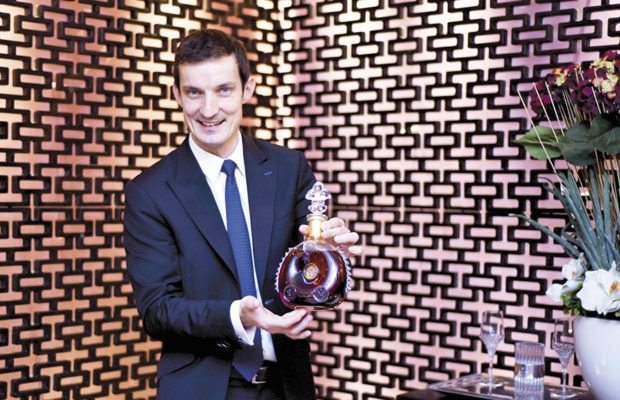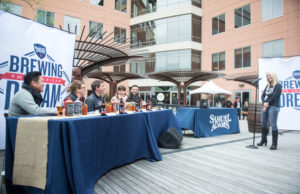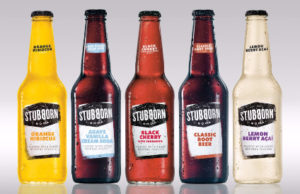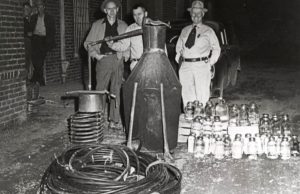India holds great potential as a market for complex drinks like cognac

Click here to view original web page at www.forbesindia.com BY KATHAKALI CHANDA Forbes India Staff
Alexandre Quintin, the international brand ambassador for Rémy Martin, says Indians appreciate brands with true heritage
In its pedigree, Louis XIII can very well match up to the French emperor it’s named after. Produced by the house of Rémy Martin, this cognac is steeped in history, and its production in the finest craftsmanship. A 30 ml peg of this spirit starts at Rs 10,000 in India and its most premium variety can set connoisseurs back by a few lakhs. Alexandre Quintin, the international brand ambassador for Rémy Martin and a Louis XIII aficionado himself, was recently in India to get a feel of the market. Edited excerpts from his interview with Forbes India:Q. What makes a good cognac?
The main ingredient for good cognac is a white grape called Ugni Blanc—they make up 90 percent of the drink—that comes from the Grande Champagne territory of the Cognac region in France; [from] anywhere else and it will be called just brandy. These grapes are grown on chalky soil that helps the roots of the vines go very deep and extract all the minerals. Once the grapes are harvested, generally in September and October, we take out the juice, which then naturally ferments into wine in a week and a half. The wine is distilled twice, after which we get what we call eau de vie, a clear liquid with 70 percent alcohol. Once it’s distilled, the cellar master (Baptiste Loiseau is the current one) does a blind tasting of different eaux de vie. The ones that have the aromatic potential are considered for Louis XIII (pronounced Louis Trez) one day. They are put into really old French oak barrels for ageing, a process that gives out unusual spicy, oaky or fruity and flowery notes.Q. Why is Louis XIII such a premium product?
About 99 percent of the eaux de vie that we make don’t make the cut for Louis XIII. As Olympic champions [are] among human beings, only the best are considered for Louis XIII. A variety of eaux de vie (the number could go up to 1,200), the youngest of which is at least 40 years old, will then be blended and aged, not just for 5 to 10 years like traditional cognac but for up to a century. You need four generations of cellar masters to craft one full decanter of Louis XIII.During ageing, the alcohol evaporates bit by bit every year, leaving behind a liquid that is highly concentrated and aromatic. In the early years, it smells of peach and apricot but, slowly, the aromas emanating from Louis XIII are much more evolved than your regular cognac. Once it’s aged up to a hundred years, Louis XIII gives you aromas that are extremely rare. For instance, myrrh, dried roses, plum, honeysuckle, tobacco, fresh mint, leather, chocolate.
Q. Cognac, as a drink, is typically associated with the elderly generation, not the youth. Is that a perception you are looking to change?
It’s a perception that is changing fast because the patterns of consumption are changing. Cognac is no more just a drink to be had after dinner, while smoking a cigar. You can have it for lunch, for dinner or even while hanging out with friends at a pub or nightclub. Also, that cognac is a drink for the older generation is a perception local to countries like India and even France. If you visit the US or China, you’ll see a lot of young people, millennials in particular, drinking Rémy Martin. They don’t just drink it straight, like the more mature generation would do. They drink it on ice, in long drinks mixed with ginger ale, tonic water or sophisticated cocktails. Millennials are looking for rich, authentic spirits with a story behind them and cognac is beginning to appeal to them.THE CRYSTAL DECANTER
Louis XIII is poured into a unique, handmade crystal decanter, with a golden neck, that was crafted as a replica of a metal flask discovered at the site of the Battle of Jarnac in 1569. It carried the fl eur-de-lys, a symbol of French royalty. It was bought by Paul Émile Rémy Martin in 1850 and reproduced in glass to hold the best eaux-de-vie that they had. Paul Émile also named the alcohol Louis XIII as a tribute to the French king, who authorised the trade of eaux de vie under his reign.
Q. How mature is the luxury alcohol market in India?
In the last few years, the luxury market in India has been growing at a compounded annual growth rate of about 25 percent. According to a report by Assocham, the market was expected to hit $18.6 billion by 2016 from the current $14.7 billion.For Rémy Martin cognacs, it’s early days in India. However, during my visit, I met a lot of passionate individuals from the luxury hotel industry and wines/spirits aficionados, and was pleasantly surprised at the level of expertise of young sommeliers, chefs and epicureans. There is a thirst for knowledge and appreciation for brands with true heritage.
The country also has many active wines and spirits clubs and an increasing number of high net worth individuals (HNIs) who travel across the country and world every week searching for unforgettable gastronomic and alcohol experiences. The fact that Rémy Martin’s brand vision and promise are linked to encouraging individuals in their quest for achievement as well as celebrating successes might resonate well with our clients.
We are confident there is a great potential for Rémy Martin here in the mid to long term.
Q. What do Indians like to drink?
In terms of spirits, it seems that Indians historically enjoy brandy in the south and whiskey in the north. This love for aged spirit is extremely encouraging for iconic cognacs like Rémy Martin. Why? Because it means that most consumers have a refined palate that can appreciate the unique aromatic intensity of our cognacs, their delicate flowers’ notes, their rich fruitiness or their spicy, oaky character.Q. What is the right way to drink a cognac?
If you are drinking your cognac straight, it should be ideally from a glass with a top as wide as the bottom. This plays a big part in your tasting as it ensures that the aromas aren’t trapped inside. Then, pour just a bit of cognac into the glass and swirl it around to coat the insides. This helps in eliminating any unwanted smell and, when you pour the cognac inside, the aromas will explode onto you. This apart, the right way to drink cognac is your own way. There are no set rules and it’s a free game when it comes to enjoyment.Q. What are the right food pairings to go with cognac?
For the finest cognacs, you have to look for the finest ingredients that reveal every facet of the liquid. For example, we pair Louis XIII with caviar from Bordeaux or the Baltic seas. The slight saltiness of the caviar complements the fruity notes of Louis XIII. Or the blue lobster. Indians will enjoy the pairing because there is a hint of spice to it. Wagyu or limousin beef which goes with the oldest aged cognacs of Louis XIII; they bring out all the spicy and oaky notes. The last one, my favourite, is the jamón ibérico or pata negra ham from Spain. It’s a ham that comes from pigs that eat only acorn. The effect you have on the palate is something we call umami, which binds together all the senses in perfect harmony.



















